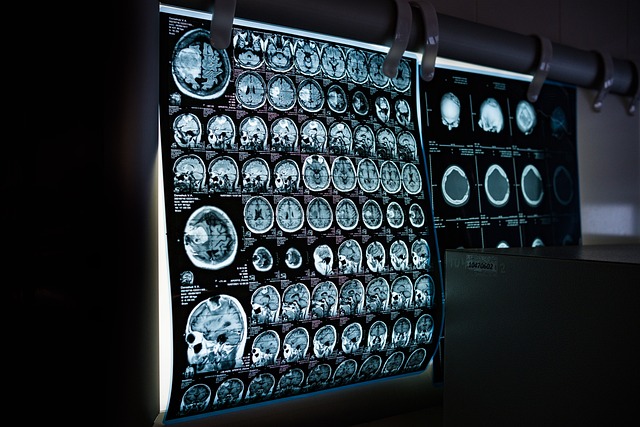Prostate Cancer Treatment Options and Management Strategies
Understanding prostate cancer starts with knowing the signs—like urinary changes or discomfort. Explore symptoms, possible treatment options, and supportive care approaches, helping patients and families make informed decisions and take proactive steps for health and well-being.

Early Symptoms Of Prostate Cancer To Watch For
Recognizing early warning signs can significantly impact treatment outcomes. Many men experience no symptoms in the early stages, which is why regular screening is essential for men over 50 or those with family history. Common early symptoms include difficulty starting urination, weak or interrupted urine flow, frequent urination especially at night, and pain or burning during urination. Blood in urine or semen, persistent pain in the back, hips, or pelvis, and painful ejaculation may also indicate prostate issues. However, these symptoms can also result from benign prostate conditions, making professional evaluation crucial for accurate diagnosis.
Prostate Cancer Risk Factors And Prevention Tips
Understanding risk factors helps men make informed decisions about screening and lifestyle choices. Age remains the primary risk factor, with most cases occurring after age 65. Family history significantly increases risk, particularly if a father or brother had prostate cancer. African American men face higher risk and often develop more aggressive forms of the disease. Geographic location also plays a role, with higher rates in North America and Europe compared to Asia. While genetic factors cannot be changed, lifestyle modifications may help reduce risk. Maintaining a healthy weight, exercising regularly, eating a diet rich in fruits and vegetables while limiting red meat and high-fat dairy products, and avoiding smoking may contribute to prevention efforts.
Step-By-Step Guide To Managing Prostate Cancer
Prostate cancer management follows a systematic approach beginning with accurate staging and risk assessment. The first step involves comprehensive testing including PSA levels, digital rectal exams, and imaging studies to determine cancer extent. Biopsy results provide crucial information about cancer aggressiveness using the Gleason score system. Once staging is complete, treatment teams develop personalized plans considering patient age, overall health, cancer characteristics, and individual preferences.
Active surveillance represents the initial approach for low-risk cancers, involving regular monitoring without immediate treatment. This strategy helps avoid unnecessary side effects while ensuring prompt intervention if cancer progresses. For localized cancer requiring treatment, surgical options include radical prostatectomy, which removes the entire prostate gland. Radiation therapy offers an alternative, delivered externally or through implanted radioactive seeds.
Advanced cases may require hormone therapy to reduce testosterone levels that fuel cancer growth. Chemotherapy becomes necessary for metastatic disease, while newer treatments like immunotherapy and targeted therapy show promising results for specific cancer types.
| Treatment Option | Provider Type | Estimated Cost Range |
|---|---|---|
| Active Surveillance | Urologist/Oncologist | $2,000-$5,000 annually |
| Radical Prostatectomy | Hospital/Surgical Center | $15,000-$50,000 |
| External Radiation | Cancer Treatment Center | $10,000-$30,000 |
| Brachytherapy | Specialized Clinic | $8,000-$25,000 |
| Hormone Therapy | Oncology Practice | $3,000-$12,000 annually |
| Chemotherapy | Cancer Center | $10,000-$30,000 per cycle |
Prices, rates, or cost estimates mentioned in this article are based on the latest available information but may change over time. Independent research is advised before making financial decisions.
Treatment success depends heavily on early detection and appropriate intervention timing. Side effects vary by treatment type but may include urinary incontinence, erectile dysfunction, bowel problems, and fatigue. Modern techniques like nerve-sparing surgery and precision radiation therapy help minimize these complications while maintaining treatment effectiveness.
Support systems play crucial roles throughout treatment. Patients benefit from multidisciplinary teams including urologists, medical oncologists, radiation oncologists, nurses, social workers, and nutritionists. Support groups provide emotional assistance and practical advice from others facing similar challenges.
Follow-up care continues long after initial treatment, involving regular PSA monitoring, physical examinations, and imaging studies when necessary. Rehabilitation services help patients regain function and adapt to any permanent changes resulting from treatment.
Prostate cancer treatment has evolved significantly, offering hope for excellent outcomes when detected early. Understanding available options empowers patients to make informed decisions alongside their healthcare teams. While treatment can be challenging, advances in medical technology and supportive care continue improving both survival rates and quality of life for prostate cancer patients.
This article is for informational purposes only and should not be considered medical advice. Please consult a qualified healthcare professional for personalized guidance and treatment.




